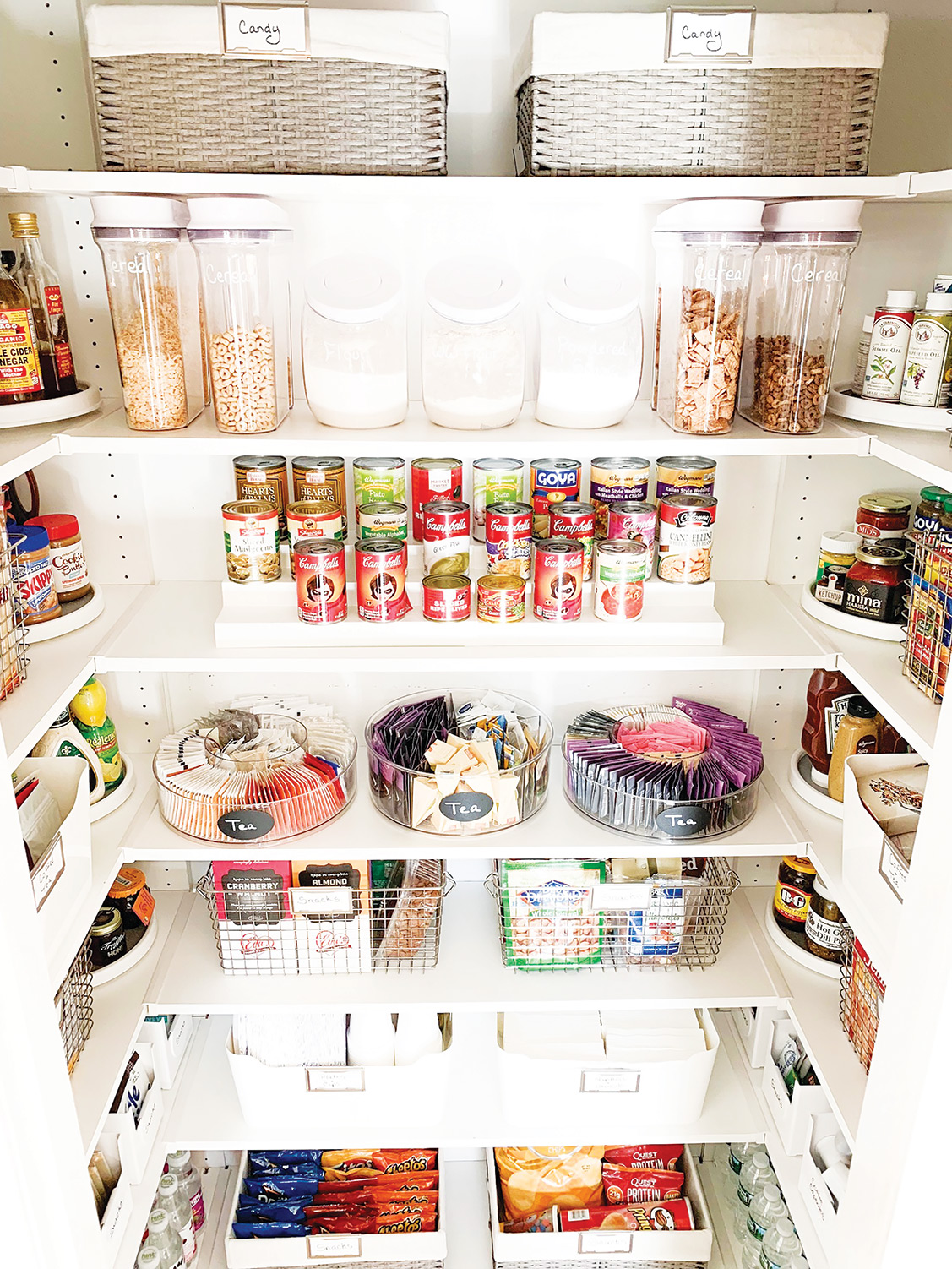10 Tips for Organizing Your Pantry
Writer Meg Fox
Allowing breathing room between storage categories creates a clutter-free, aesthetically pleasing space.
Create a sense of calm with efficient, clutter-free cupboards
 With the countdown to the holidays upon us—and a whole new year to embrace—there may be no better time to take stock of what’s inside the pantry to tidy things up, beef up your baking supplies or dispose of three-year expired tuna. To tackle the pantry, we tapped self-proclaimed neat freak Gilat Tunit, founder of The Project Neat, a home organization company based in New Jersey. Tunit shares her 10 strategies for keeping pantries clean, uncluttered, well-stocked and at top working capacity.
With the countdown to the holidays upon us—and a whole new year to embrace—there may be no better time to take stock of what’s inside the pantry to tidy things up, beef up your baking supplies or dispose of three-year expired tuna. To tackle the pantry, we tapped self-proclaimed neat freak Gilat Tunit, founder of The Project Neat, a home organization company based in New Jersey. Tunit shares her 10 strategies for keeping pantries clean, uncluttered, well-stocked and at top working capacity.
1. Empty the Space
The first thing to do when tackling your pantry is fully clear out the space. You always want to start a revamp with a clean slate.
2. Purge
As you empty the space, look for items you don’t ever use as well as items that are expired.
3. Separate and Sort
As you empty and purge the items, separate and sort them by categories, such as pastas, breads, baking, snacks, spices, breakfast and on-the-go cereals.
4. Product Selection
Now that you know what goes back into the pantry, select the best storage products to contain the items in each category.

Keep dry ingredients in clear, airtight containers. A few basic accessories such as lazy Susans, a can stacking organizer and baskets all make the most of limited pantry space.
5. Space Plan
To coincide with storage system selection, you need to have a good idea of the size and scope of your pantry. This will make it easier to evaluate which products work best.
6. Clear Containment
As a rule of thumb, the storage products you choose should make it easy to see the items you’re containing. I love clear acrylic bins so you can easily spot the zones you’re creating.
7. Decant
Unboxing your items is a major part of saving space. Decant your bulk snacks, cereals, pastas and similar items into canisters and bins so you have easy access as well as control of your inventory. Unboxing things goes a long way toward creating a lot more space.

Label and neatly organize your pantry into zones for smooth, efficient meal prep.
8. Backstock
There is no reason to have many jars of the same sauce at the same time. Create space in the pantry for one or two of the same item and put the rest in a large bin or store them elsewhere, such as in a garage if you have one.
9. Clutter Free
Each category should have a clear zone. I like to give clients breathing room by creating space between each category. It’s aesthetically pleasing and won’t overwhelm you when you enter the space.
10. Label, Label, Label
Lastly, but just as important, label each and every section you have created. These labels will make it easy to identify what you have, where you have it and how much of it is there.
One extra tip: Do Not Overbuy.
Replenish your stock as you use it. If you buy in bulk, keep it in your backstock.
